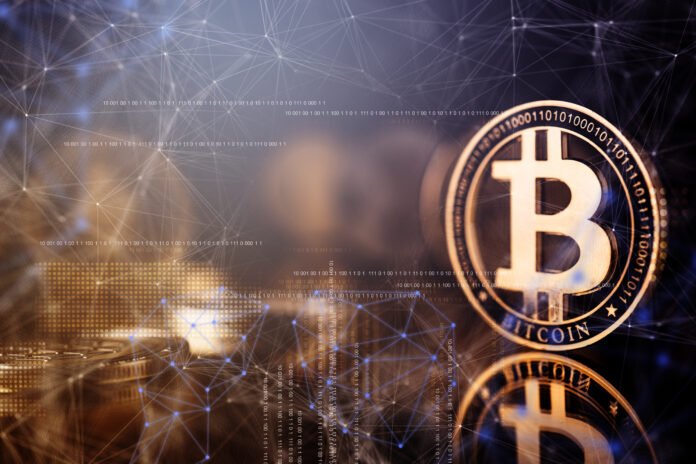Precious metals are only rare when you confine your perspective to what’s available on this planet at this moment in time. On that note, 16 Psyche, an asteroid orbiting between Mars and Jupiter, is estimated to contain between $10 quintillion and $700 quintillion worth of gold and other precious metals, meaning that the rock could have reserves of vastly more than all the bullion mined on Earth so far.
What’s more, NASA launched a probe in late 2023 and expects it to reach the asteroid in 2029 to survey its composition in more detail.
The odds of a space mining rig ever getting established and shipping ore back to Earth are incredibly remote and not worth pricing into any of your financial models. But even if none of that asteroid’s metal ever lands on Earth, the mere possibility of it happening significantly undermines gold’s claim to lasting scarcity in the big picture of things. Bitcoin, (BTC 6.29%) on the other hand, faces no such threat.
There’s no Bitcoin in space
Earth-bound investors like to think of gold as a finite store of value. It’s cumbersome to mine more of the metal and requires a lot of capital investment.
The planet already houses approximately 216,265 tonnes — or about $16 trillion worth of gold at today’s spot price. By comparison, that single asteroid that has captured people’s attention theoretically holds enough metal to multiply that supply millions of times over. Flood the market with even a fraction of that supply, and the price of gold would collapse overnight.
Asteroid mining on any commercial scale is decades away and would be wildly expensive — and we don’t yet know what 16 Psyche actually contains — so gold’s scarcity is still in play today and for the foreseeable future. Still, the thought experiment reminds us that gold’s scarcity is geological and effort-constrained, not guaranteed as a result of any property of the metal itself.
Bitcoin’s scarcity is different, and over the very long run, likely to get worse rather than better, meaning it should get more valuable over time. Its software hard-codes a lifetime issuance cap of 21 million coins. Roughly 19.7 million of that sum already circulates, and the reward for creating the rest keeps shrinking every four years in an event called the halving. The next halving should occur late in the first half of 2028.
Unlike gold, no cosmic mother lode can dilute the coin’s holders. The protocol’s math is indifferent to new mining techniques, improved refineries, better drills, or interplanetary miners.

Image source: Getty Images.
Three practical reasons for buying Bitcoin over gold
A science fiction supply shock from asteroid mining is fun to ponder, but probably won’t be realized in our lifetime. Investors need concrete portfolio logic to allocate their capital, so here are three reasons why Bitcoin is more deserving of their allocation than gold in today’s economy.
First, the asset is not always tightly correlated with the rest of the market and the economy during times of turbulence, as the cause of turbulence often reasonably affects the demand for commodities like gold. For instance, instability in a country that houses a lot of gold mining companies might cause the price of gold to be highly unpredictable during a time that the market is otherwise tranquil, but that probably won’t ever happen with Bitcoin because it isn’t exposed to the same set of geography-related risks.
In 2024, Bitcoin sometimes traded like a tech stock, yet its relationship with other macro assets, including gold, remains inconsistent. When U.S. markets wobbled under the “Liberation Day” tariff fears this spring, Bitcoin rallied 15% while the wider market sagged, signaling its capacity to zig when equities zag, even if it isn’t guaranteed.
Second, the coin behaves more like an inflation hedge in countries with weaker fiat currencies than in it does in developed economies. That dynamic could widen as more people face currency debasement and face the risk of capital controls, which are both problems gold historically mitigated. The difference is that it’s much easier to transfer Bitcoin across borders, making it more attractive than physical gold.
Finally, Bitcoin’s supply curve generates significant upside, but gold’s doesn’t. Gold’s supply grows roughly 1.5% annually. Bitcoin’s growth will fall below 0.5% after the 2028 halving, and eventually to zero.
Past halvings preceded multiyear bull runs. Meanwhile, volatility has trended lower with each cycle, offering the potential for a smoother ride to committed holders over the years. It might not ever be as easy of an asset to hold as gold from an emotional perspective, as its price will probably always be far more volatile than that of any precious metal, but it’ll probably continue to outperform gold, too. So at least investors might get some compensation for the lost sleep.
Still, none of this eliminates risk.
Bitcoin can experience sharp swings in its value. But scarcity that can only intensify, that plus utility that grows with global adoption give it an investment thesis gold can’t match. Short-term price action can be bad for holders, but over the long term, it has reliably rewarded those with patience and I predict the same for the future.


























